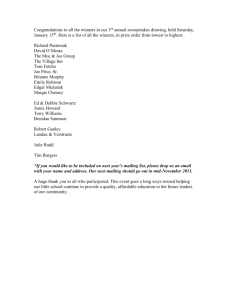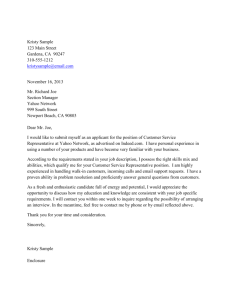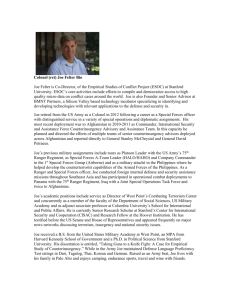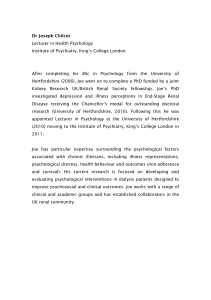T100: Register Client Generated Key
advertisement
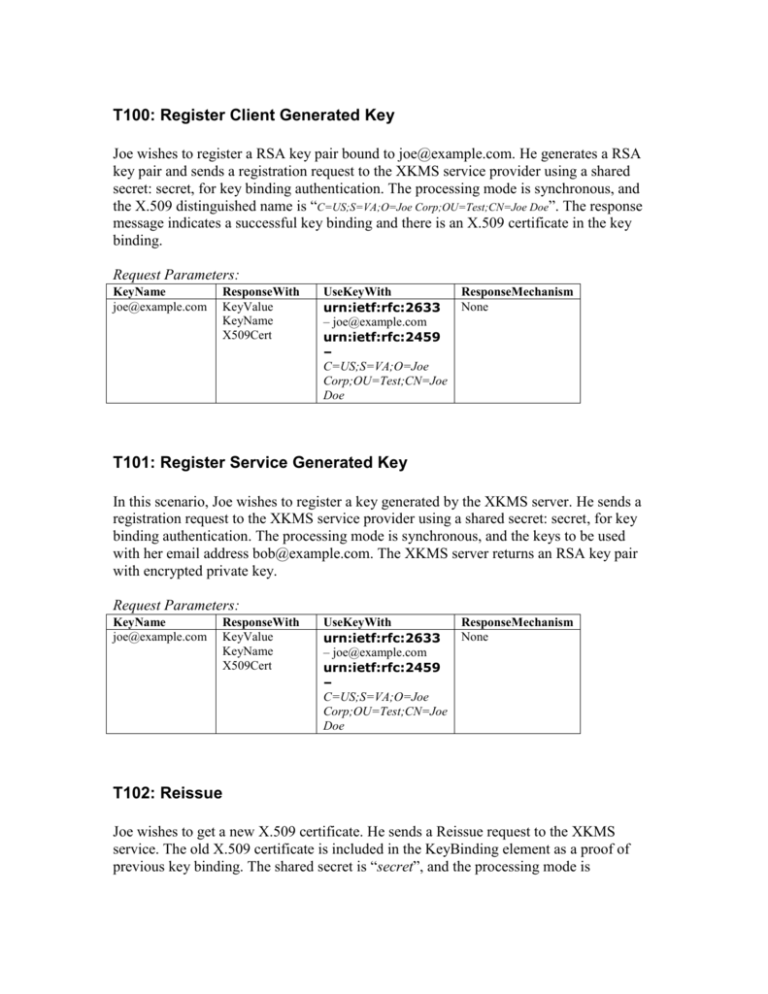
T100: Register Client Generated Key Joe wishes to register a RSA key pair bound to joe@example.com. He generates a RSA key pair and sends a registration request to the XKMS service provider using a shared secret: secret, for key binding authentication. The processing mode is synchronous, and the X.509 distinguished name is “C=US;S=VA;O=Joe Corp;OU=Test;CN=Joe Doe”. The response message indicates a successful key binding and there is an X.509 certificate in the key binding. Request Parameters: KeyName joe@example.com ResponseWith KeyValue KeyName X509Cert UseKeyWith urn:ietf:rfc:2633 – joe@example.com urn:ietf:rfc:2459 – C=US;S=VA;O=Joe Corp;OU=Test;CN=Joe Doe ResponseMechanism None T101: Register Service Generated Key In this scenario, Joe wishes to register a key generated by the XKMS server. He sends a registration request to the XKMS service provider using a shared secret: secret, for key binding authentication. The processing mode is synchronous, and the keys to be used with her email address bob@example.com. The XKMS server returns an RSA key pair with encrypted private key. Request Parameters: KeyName joe@example.com ResponseWith KeyValue KeyName X509Cert UseKeyWith urn:ietf:rfc:2633 – joe@example.com urn:ietf:rfc:2459 – C=US;S=VA;O=Joe Corp;OU=Test;CN=Joe Doe ResponseMechanism None T102: Reissue Joe wishes to get a new X.509 certificate. He sends a Reissue request to the XKMS service. The old X.509 certificate is included in the KeyBinding element as a proof of previous key binding. The shared secret is “secret”, and the processing mode is synchronous. The XKMS server returns a new certificate with new validity interval in the response message, and the status of the key binding is valid. Request Parameters: KeyName joe@example.com ResponseWith KeyValue KeyName X509Cert UseKeyWith urn:ietf:rfc:2633 – joe@example.com urn:ietf:rfc:2459 – C=US;S=VA;O=Joe Corp;OU=Test;CN=Joe Doe ResponseMechanism None T103: Recover Joe wishes to recover his private key which he has forgotten. The XKMS administrator issues him a new authorization code “secret1” for the key recovery operation. He sends key recovery requests to the XKMS with an indeterminate key binding to his public key. The processing mode is asynchronous. Bob then sends a GetStatus message and the status result is success. Finally, he issues a Pending request to retrieve the encrypted private key. Request Parameters: KeyName joe@example.com ResponseWith KeyValue KeyName X509Cert UseKeyWith urn:ietf:rfc:2633 – joe@example.com urn:ietf:rfc:2459 – C=US;S=VA;O=Joe Corp;OU=Test;CN=Joe Doe ResponseMechanism Pending T104: Revoke Joe wishes to revoke a compromised key binding. The key was registered with a revocation pass phrase “Help I Have Revealed My Key”. The processing mode is synchronous. The revocation result is successful and the result key binding is invalid. Request Parameters: KeyName joe@example.com ResponseWith KeyValue KeyName X509Cert UseKeyWith urn:ietf:rfc:2633 – joe@example.com ResponseMechanism None

